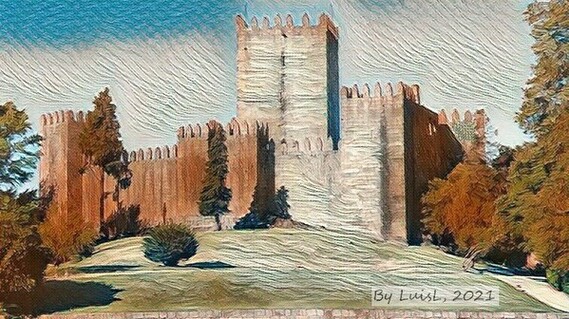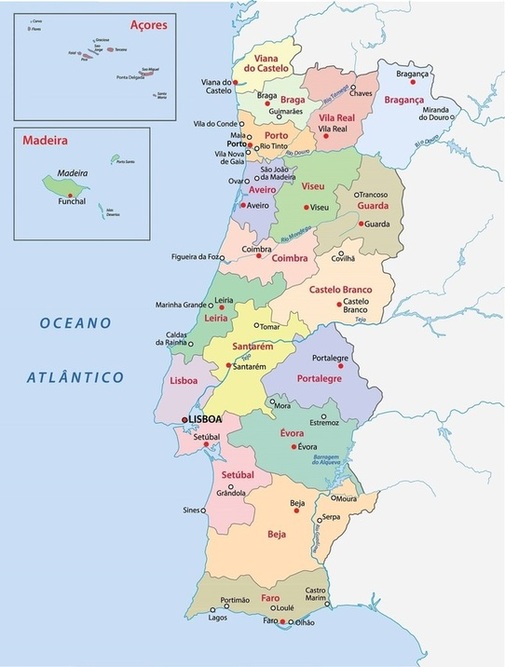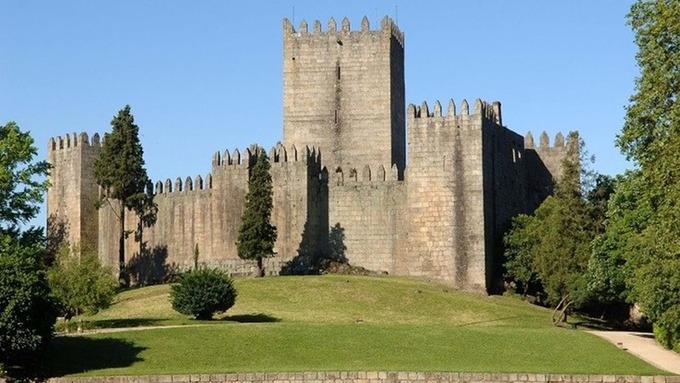
Location - District: Braga ; County: Guimarães
Status - Classified as:
- National Monument (1908, at the time of the Constitutional Monarchy)
- National Monument (1910, after the implantation of the Republic)
- As Cultural Heritage of Humanity (together with the Historic Centre of Guimarães, 2001, UNESCO)
Time of existence of the castle

Background
It is difficult to locate in time and space the exact moment when the castles began to appear. We do know that at the end of the 10th century AD there was already a dense network of these constructions all over Iberia.
It is difficult to characterize these early defensive structures. We can, however, affirm that they were located on high points that facilitated the field of vision, had walls with fragilities, executed in a more primitive way, that took advantage of the facilities granted by the morphology of the terrain and that they were built near water courses.
The castles were built in unstable historical-military contexts and therefore had an important role in defending the territory, the populations that lived there and the existing accesses.

In the face of what we know today we can say that there are no "pure" castles, in the sense that they have preserved over the past centuries exactly the same original features and characteristics, or in other words, that they have remained exactly the same as they were at the time of their first construction.
Over time the castles have suffered various influences. It is also the case of Guimarães Castle. It is a monument that reflects the evolution of times, concepts and needs felt in each era.
Thus, since the 10th century AD, when the need to build a fortress was felt, until the present day, there have been many changes in the social, political and military context, and therefore of defence.
For this reason, Guimarães Castle has undergone many changes of physiognomy over the centuries. The castle as we know it is not the same as it was in the 10th century AD.
Thus, and according to some historians, the life of Guimarães Castle can be divided into several phases, but here we will choose to highlight some of the episodes that went down in History and marked what is considered the Cradle of the Nation.

The time of the Countess Mumadona Dias and the settlement of Vimaranes
In the middle of the 10th century AD, the Countess Mumadona Dias and her husband Hermenegildo Gonçalves (Count of Tui), marry and have several children. Later, after her widowhood, this countess became one of the most powerful ladies of the peninsular northwest in Vimaranes (now the city of Guimarães).
He then decided to have two important buildings constructed: one, in the lower part of Vimaranes, the Monastery of Santa Maria and Salvador (around 950); the other, in the upper part of the same territory, a castle called the Castle of S. Mamede (between 950 and 957).
This fortification was necessary to defend the monastery and the population that, in the meantime, settled in the region, as it was strongly attacked, either by Muslims (coming from the territories south of Coimbra) or by Normans (coming from the cold regions of northern Europe).
Little or nothing is known about this primitive military stronghold, apart from the fact that it was one of the first examples of a castle built to ensure the protection of a monastery, a pairing that would come to occur other times in the following centuries.
The time of Count Henry of Burgundy and his wife Teresa of Leon

Carta de Couto do Mosteiro de Tibães
A little over a century later (in the second half of the 11th century), and as a reward for his help in the Christian Reconquest, King Alfonso VI of León and Castile donated the Condado Portucalense to Count Henry of Burgundy (1095-1112), through his marriage to Teresa of León (the monarch's daughter, born out of wedlock).
The Condado Portucalense was constituted by the parcel of land, delimited by the rivers Minho and Douro and included the village of Vimaranes with its Castle. It was precisely Vimaranes that Count D. Henrique chose to establish his court.
Perhaps the security that the Castle of São Mamede - as its founder had called it - offered weighed heavily on her decision.

Painting of King Dom Afonso Henriques (National Library Archive)
History also tells us that it was here, in Guimarães, that the young Infante Afonso (future first King of Portugal) grew up and spent his childhood.
The fortification, by this time, would need urgent repairs and the count opted to partially demolish the Mumadona building, enlarging the area occupied by the original fortress with new, thicker walls.
It is this date that we will consider as being the date of construction of the primitive castle of Guimarães.
CONTINUE (See PART 2)
Like it? Then share it!
